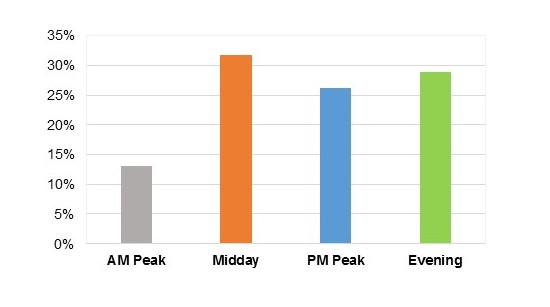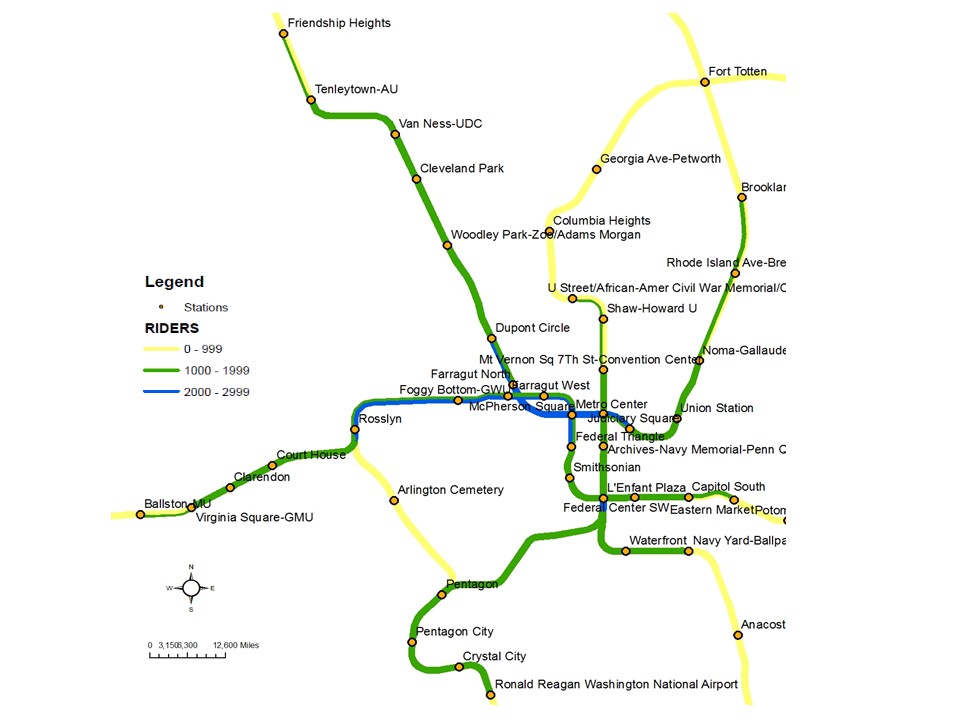Beyond Rush Hour – Taking a Peek at the Off-Peak
Metrorail ridership isn’t only about rush hour! Here’s a deeper look at why off-peak riders travel, and what segments are most traveled.
You may not be surprised that the peak period travel on Metrorail is dominated by commuting and business related trips. Every day from opening to 9:30am, nearly 90 percent of passengers travel to work and business. However do you know that over almost a third of daily ridership takes place in the off peak? This post explores what is happening during weekday off-peak periods.
The weekday “off-peak” time typically refers to the weekday midday period (9:30am to 3:00pm) and the weekday evening period (from 7:00pm to closing), excluding late night service on Friday and Saturdays between midnight and 3:00am. In recent years, weekday off-peak travel demand has remained stable at 32 percent of the daily ridership, with the midday ridership at 19-20 percent and the evening ridership at 12 percent.
Most non-work trips, such as personal, recreational, and shopping trips, occur during the off-peak times and are spread fairly evenly between the midday and evening, as illustrated in Figure 1.
The off-peak, non-work travel market has showed strong growth between 2007 and 2012 (our last two passenger surveys where we can distinguish between work and non-work travel). According to the Metrorail passenger surveys, off-peak non-work trips grew by 15 percent for the midday and evening from 2007 to 2012, higher than the 9 percent increase in the daily non-work trips.
Metro monitors AM and PM peak rail-car loads on a monthly basis with traffic clerks stationed at the maximum load stations. Due to resource constraints, Metro does not routinely monitor off-peak rail-car loading. We are updating an in-house application that uses faregate transaction data to estimate passenger demand anytime during the day. Below is a snapshot of midday trips on Metrorail from the application using faregate data. The heaviest midday traffic occurs on the Red Line between Farragut North and Gallery Place in both directions, the combined Orange/Silver/Blue Lines between Rosslyn and Federal Triangle in the eastbound direction, and the combined Yellow and Green Lines south of L’Enfant Plaza.




Mid-day and evening ridership trends are very different. Total mid-day weekday ridership rose from 112,658 in 1995 to 136,913 in 2014, an increase of 21.5%. This is less than the increase in peak ridership (34.6% am, 33.4% pm) and much less than the evening (77%) and weekends.
I can think of reasons for the large evening and weekend increases (such as the trend to less car use and urban living), but not for the relative weakness of mid-day ridership. Any ideas?
I agree with you that the increase in the evening and weekend ridership benefited from the new and mixed use development around stations and reflected the trend of urban living.
For the past five years (2010-2015), we noticed that the share of midday ridership remained stable at 20% of the daily ridership and the evening ridership at 12%, indicating that the ridership grew at the same pace for both midday and evening services.
I expect the downtown dominance is a combination of tourists and short lunch hour trips? Is it consistent from 10-3 or is there a mini peak around 12-1? I imagine that students generate a number of those trips as well either university or charter kids that have an earlier schedule.